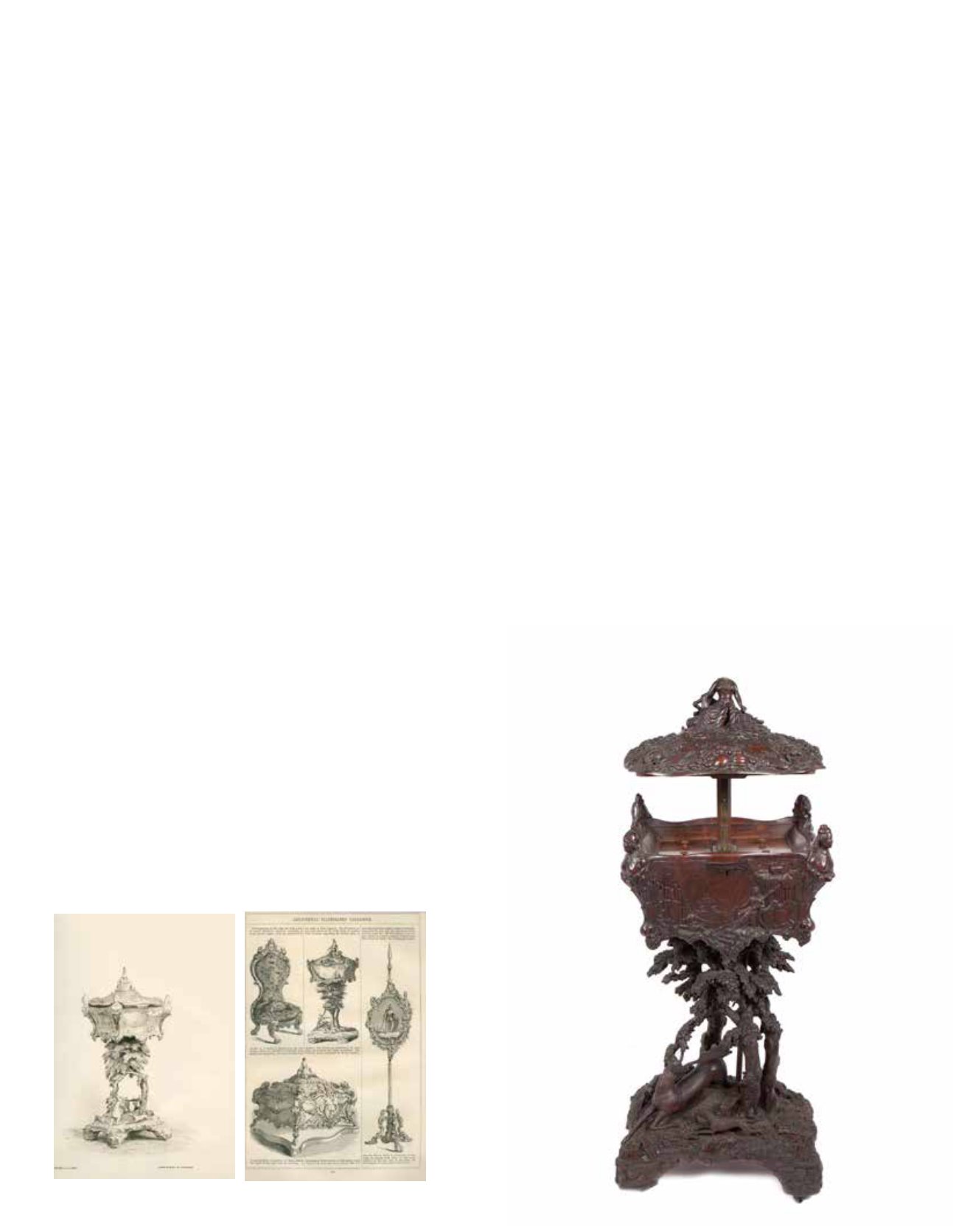
196
629
AN IMPORTANT IRISH CARVED Bog Yew TEAPOY,
by Arthur Jones & Co., 1851, made for The Great Exhibition
53 x 47 x 117cm
After the dislocation caused by the Act of Union and the demoralisation of the Country after the Great Famine there was a
considerable re-gaining of confidence in the mid 19th Century.
A new professional and official class emerged which, after the Westminster Parliamentary reforms from 1832 and Catholic
emancipation, filled the vacuum created by the political departure of the ascendancy landed class, who in any case had been
financially wrecked by the Famine. Architecturally the Catholic church stamped its resurgence on the land with its building of
stolid churches, monasteries, convents and institutions which even today have not mellowed. Well-built farm houses on ex-
landlord’s lands, villas, rows of brick-built terraced houses appeared all requiring furnishings of Victorian excess.
A reshaped Irish identity was being formed by this bourgeoisie, predicated to allegiance to the British Empire and particularly
to the Monarchy. From Maria Edgeworth’s novels through Thomas Moore’s melodies, narratives and symbols were conjured up
of True Irishness paralleled by the True Scottishness of Walter Scott that facilitated participation in the distribution of fruits (ie.
spoils) from the empire.
Of the Dublin cabinet makers who flourished up to the mid 19th Century, Gillingtons, Williams & Gibton, Beakey et al.,
probably Strahan and Arthur Jones were best equipped to survive into the late Victorian era. John Lambert Jones who took
over the firm was a Victorian entrepreneur
par excellence
and he lost no opportunity to promote his “Cabinet and Upholstery
Manufacturers, 135, Stephen’s Green, Dublin”, “also auctioneers and appraisers and estate agents”; proudly advertised were
“Funerals conducted in a superior manner and in various scales of expense, suitable to the rank and means of the deceased.”
The Great Exhibition in London in 1851 was an opportunity too good to miss and Arthur Jones & Sons, Dublin took a stand
to display ‘National Historic Furniture of Ireland’. Jones claims that he researched himself the ‘semi-barbaric splendour’ of
Ireland’s past and now translated this in ‘wonderful picturesqueness’ to “Sculptured Decorative Furniture” that would contribute
to the brilliant moral revival taking place and Ireland could, at last, cease to be ‘a disparagement of Britain’s unparalleled moral
and material elevation’.
The ‘Crystal Palace’ exhibition was an unprecedented success but Jones did not sell many of his pieces. Probably he viewed it
as a publicity exercise to promote the overall business in Dublin. He recouped his expenses by publishing a ‘description’ of his
Sculptured Furniture, Dublin (Hodges & Smith) 1853 and, as explained in a letter from the original owner of this lot, Jones sold
2000 tickets at a guinea each to raffle the pieces, the writer’s father winning the present lot.
€15,000 - 25,000


